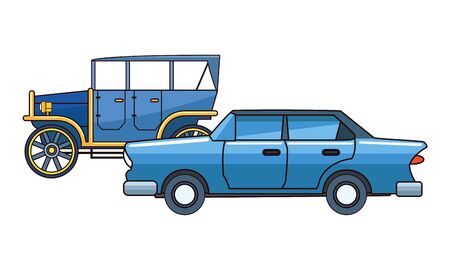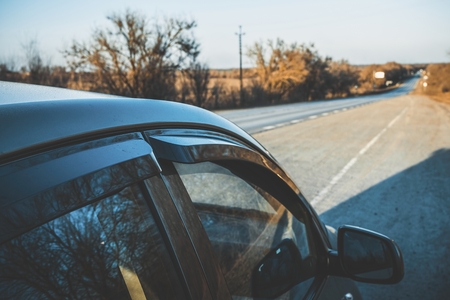1. Introduction to School Zone Traffic Laws
School zone traffic laws are designed to protect children and ensure their safety as they travel to and from school. These laws regulate speed limits, pedestrian crossings, and vehicle behavior in designated school areas. Understanding these regulations helps drivers make responsible decisions and prevent accidents.
Why Are School Zone Traffic Laws Important?
Children are more vulnerable to traffic-related accidents because they may not fully understand road safety. School zone laws create a controlled environment that minimizes risks for young pedestrians and school bus passengers.
Common School Zone Traffic Laws in the U.S.
Each state in the U.S. has its own specific school zone traffic laws, but many of them share common rules. Below is an overview of some of the most common regulations:
| Law | Description |
|---|---|
| Reduced Speed Limits | Most school zones have speed limits between 15-25 mph during school hours. |
| No Passing | Drivers are usually prohibited from passing other vehicles in active school zones. |
| Stopping for School Buses | Motorists must stop for school buses displaying flashing red lights and stop signs. |
| Crosswalk Right-of-Way | Drivers must yield to children and crossing guards in designated crosswalks. |
| Increased Fines | Fines for traffic violations in school zones are often higher than regular traffic fines. |
When Are School Zone Laws Enforced?
School zone speed limits and regulations are typically enforced during school hours, which may include mornings and afternoons when students arrive and leave school. Many areas use flashing signs to indicate when school zone laws are in effect.
What Happens if You Violate School Zone Traffic Laws?
Penalties for violating school zone laws vary by state but commonly include hefty fines, points on a drivers license, and even license suspension for repeat offenses. Understanding these laws helps drivers avoid penalties and, more importantly, protect children on the road.
2. Speed Limits and Traffic Signs in School Zones
Understanding Reduced Speed Limits
School zones have reduced speed limits to ensure the safety of children crossing the street or walking near traffic. These speed limits vary by state but typically range from 15 to 25 mph during school hours. Drivers must be aware of when these lower speed limits are active, which is usually indicated by signs or flashing lights.
Recognizing School Zone Signs
School zones are marked with specific signs to warn drivers to slow down and stay alert. Here are the common signs you may see in a school zone:
| Sign | Meaning |
|---|---|
| School Zone Ahead | Reduce speed and prepare to enter a school zone. |
| Speed Limit Sign | Indicates reduced speed limits applicable in the school zone. |
| Pedestrian Crossing | Warns drivers of potential students crossing the road. |
| Flashing Lights with Speed Limit | Signals when the reduced speed limit is actively enforced. |
How Flashing Lights Work
Flashing lights in school zones help indicate when the reduced speed limit is in effect. These lights typically operate during school start and dismissal times. If the lights are flashing, drivers must slow down to the posted speed limit. Some areas also have automated cameras that issue tickets if a driver exceeds the limit when the lights are active.
Tips for Safely Driving in a School Zone
1. Always be prepared to stop
Children may suddenly enter the roadway, so drivers should remain cautious and ready to stop.
2. Follow the posted speed limits
Even if you don’t see children, reduced speed limits help provide additional reaction time for unexpected situations.
3. Watch for crossing guards
Respect crossing guards and obey their signals to ensure safe passage for students.
4. Avoid distractions
Stay focused by putting away phones and other distractions while driving through a school zone.

3. Three, School Buses and Right-of-Way Rules
School buses play a critical role in transporting children safely to and from school. As a driver, you must follow strict laws when approaching or stopping for a school bus. Ignoring these laws can result in severe penalties and, more importantly, put childrens lives at risk. Below is a breakdown of key rules you need to know.
When to Stop for a School Bus
Most U.S. states require drivers to stop for a school bus when it is loading or unloading children. The bus will use flashing red lights and extend its stop arm to signal that children are crossing.
School Bus Stopping Rules by Road Type
| Road Type | Do You Need to Stop? |
|---|---|
| Two-lane road | Yes, both directions must stop. |
| Multi-lane road without a median | Yes, both directions must stop. |
| Divided highway with a median | Only traffic traveling in the same direction as the bus must stop. |
Right-of-Way Rules in School Zones
Yielding the right-of-way is critical in school zones to ensure student safety. When approaching a school crossing guard, always stop when directed. Additionally, pedestrians, especially children, have the right-of-way at crosswalks.
Right-of-Way Guidelines
- Always yield to pedestrians in marked and unmarked crosswalks near schools.
- Stop for crossing guards and follow their instructions.
- Reduce speed and be ready to stop when driving near stopped school buses, even if not required by law.
Penalties for Violating School Bus Laws
Failing to stop for a school bus can result in heavy fines, points on your driving record, and even license suspension. Some states also use cameras on school buses to capture violations.
Potential Consequences
| Violation | Penalty |
|---|---|
| Failing to stop for a school bus | Fines up to $1,000 and points on license |
| Repeat offenses | License suspension and increased fines |
| Causing an accident | Possible jail time and civil liability |
How to Stay Alert and Protect Students
Always stay vigilant in school zones and near school buses. Avoid distractions like cell phones and continuously scan for children who may enter the roadway unexpectedly. By following these rules, you help ensure that children can travel safely to and from school.
4. Pedestrian Safety and Crosswalk Regulations
Why Yielding to Pedestrians Matters
When driving through school zones, yielding to pedestrians is not just courteous—its required by law. Children may be unpredictable, especially during drop-off and pick-up times. By stopping for pedestrians at crosswalks, you help ensure their safety as they cross the road. Failing to yield can result in serious accidents or hefty fines.
Understanding School Crossing Guard Signals
School crossing guards play a crucial role in protecting children. They wear reflective vests and use handheld stop signs to control traffic flow. Drivers must always obey their signals, even if it means waiting longer than expected. Crossing guards are there to help children cross safely, and ignoring their instructions puts lives at risk.
Common Crossing Guard Signals
| Signal | What It Means for Drivers |
|---|---|
| Raised Stop Sign | Come to a complete stop and wait until the guard lowers the sign and signals you to proceed. |
| Hand Raised (Palm Out) | Stop immediately; children are about to cross or are crossing. |
| Waving Arm Forward | You may proceed with caution after ensuring the crosswalk is clear of children. |
Tips for Safe Driving Near Crosswalks
- Slow down when approaching crosswalks, especially near schools.
- Never pass another vehicle that is stopped at a crosswalk; there may be children crossing you cannot see.
- Stay alert for sudden movements from kids who might dash into the street.
- Avoid distractions such as cell phones while driving in school zones.
Your Responsibility on the Road
By following pedestrian safety rules and respecting school crossing guard signals, you contribute to a safer environment for everyone in your community. Remember, being patient and attentive can prevent accidents and save lives.
5. Tips for Drivers and Parents to Ensure Child Safety
Best Practices for School Zone Safety
Keeping children safe in school zones is a shared responsibility for both drivers and parents. Here are some practical tips and best practices to follow:
For Drivers
- Always slow down: Obey the posted speed limits in school zones, which are often 15-25 mph. Be extra alert for flashing lights that indicate when the reduced speed limit is in effect.
- Stay alert for crossing guards and signs: Always follow their signals and instructions. Stop completely at crosswalks and never try to pass another vehicle stopped for pedestrians.
- Avoid distractions: Put away your phone, food, or anything else that takes your focus off the road. Children can be unpredictable, so stay focused at all times.
- No passing in school zones: Never overtake or pass other vehicles within a school zone, especially when children are present or buses are loading/unloading.
- Watch for school buses: When a bus displays flashing red lights and extends its stop sign, you must stop—regardless of your direction of travel (unless there’s a physical barrier).
For Parents and Guardians
- Teach children about road safety: Remind kids to look left, right, and left again before crossing streets. Use crosswalks and obey signals.
- Drop off and pick up safely: Only use designated drop-off and pick-up areas. Avoid double-parking or letting children exit on the street side of the car.
- Be early, not rushed: Arrive with plenty of time so you’re not tempted to speed or ignore rules due to running late.
- Dress for visibility: Encourage kids to wear bright or reflective clothing, especially on cloudy days or during early morning hours.
Quick Reference Table: School Zone Safety Tips
| Who | What to Do |
|---|---|
| Drivers | – Slow down – Watch for signs & crossing guards – Avoid distractions – Don’t pass other cars – Stop for school buses |
| Parents/Guardians | – Teach road safety – Use proper drop-off/pick-up areas – Arrive early – Dress children for visibility |
Your Role Matters
The actions you take can make a huge difference in keeping children safe around schools. By following these simple guidelines, everyone can help create a safer environment in school zones across America.


